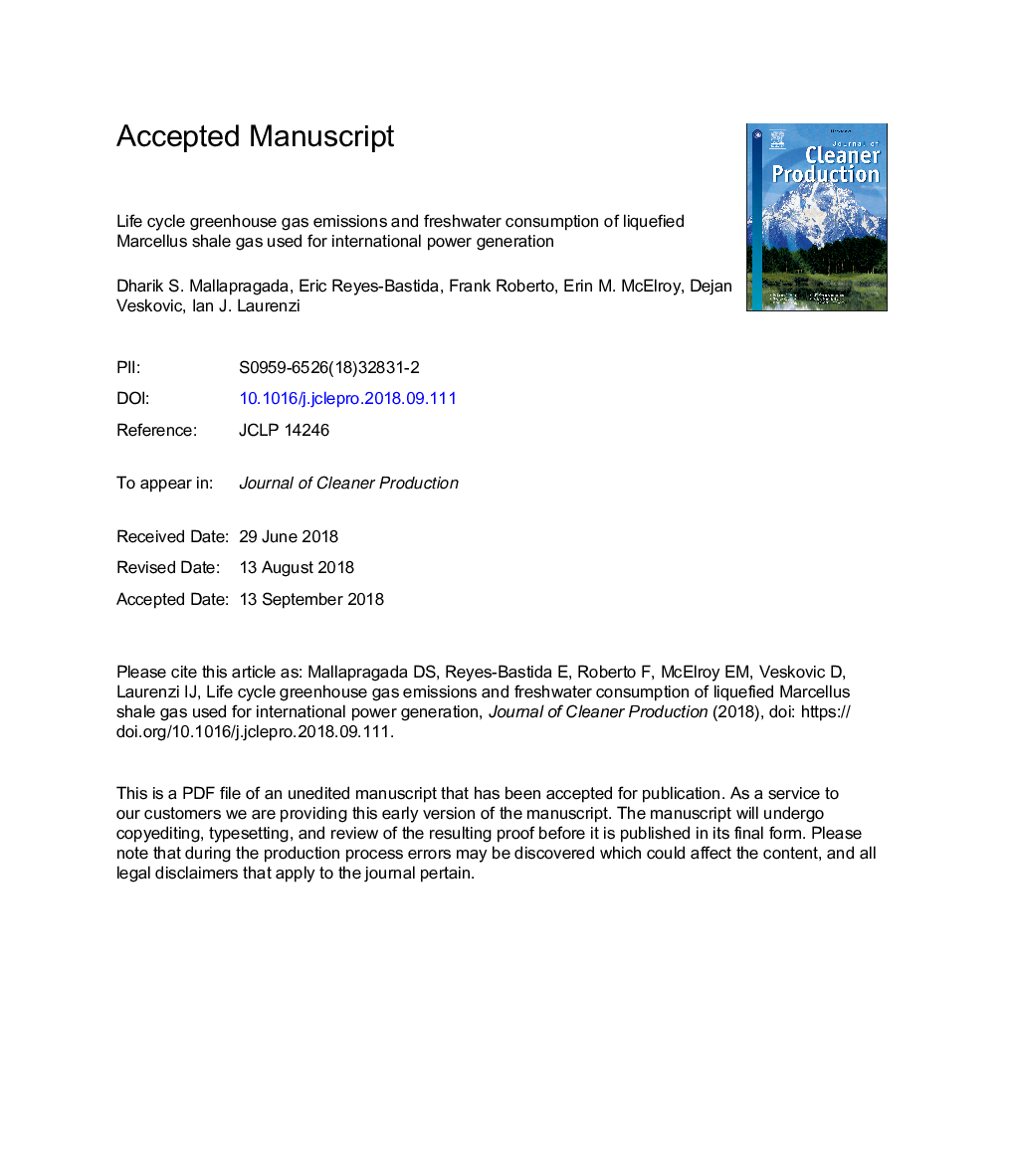| Article ID | Journal | Published Year | Pages | File Type |
|---|---|---|---|---|
| 10156322 | Journal of Cleaner Production | 2018 | 21 Pages |
Abstract
The recent growth in U.S. natural gas reserves has led to interest in exporting liquefied natural gas (LNG) to countries in Asia, Europe and Latin America. Here, we estimate the life cycle greenhouse gas (GHG) emissions and life cycle freshwater consumption associated with exporting Marcellus shale gas as LNG for power generation in different import markets. The well-to-wire analysis relies on operations data for gas production, processing, transmission, and regasification, while also accounting for the latest measurements of fugitive CH4 emissions from U.S. natural gas activities. To estimate GHG emissions from a typical U.S. liquefaction facility, we use a bottom-up process model that can evaluate the impact of gas composition, technology choices for gas treatment and on-site power generation on overall facility GHG emissions. For LNG exports to Mumbai, India for power generation in a combined cycle power plant with 50% efficiency, the base case life cycle GHG emissions, freshwater consumption, and CH4 emissions as fraction of gross gas production are estimated to be 473â¯kg CO2eq/MWh (80% confidence interval: 452-503â¯kg CO2eq/MWh), 243 gal/MWh (80% CI: 200-300 gal/MWh) and 1.2% (80% CI: 0.81-1.79%), respectively. Among all destinations considered, typical life cycle GHG emissions range from 459â¯kg CO2eq/MWh to 473â¯kg CO2eq/MWh, with GHG emissions from liquefaction, shipping and regasification contributing 7-10% of life cycle GHG emissions.
Related Topics
Physical Sciences and Engineering
Energy
Renewable Energy, Sustainability and the Environment
Authors
Dharik S. Mallapragada, Eric Reyes-Bastida, Frank Roberto, Erin M. McElroy, Dejan Veskovic, Ian J. Laurenzi,
